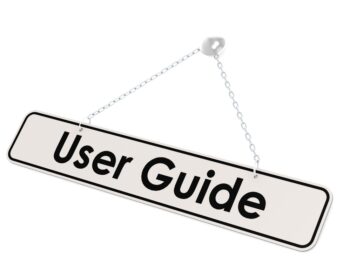Redefining “Fair Compensation” In Our Nation’s Road To Recovery
Would you agree that a health provider, who knowingly billed an insurer twice for the same exact service, on the same patient, would be guilty of fraud?
If you received an after-tax check of $700 for a long week’s work, should your neighbor, not having worked at all, be able to submit your same timecard and receive $1,200?
Personal injuries involve those filed claims and lawsuits, including and superseding simple auto accidents, but involving a third party, liable for causing ‘damage’ to an individual. Some examples include medical malpractice, workplace injuries, negligence, abuse, assault, defective products and pharmaceuticals, etc. The health payer industry recognizes these as third-party liabilities or TPLs.
The Collateral Source Rule
Our initiation into the realm of third-party injury claims and torts begins with a true eye-opener – the Collateral Source Rule. This is a provision of common law, allowing an attorney or injured party, within their submission of a liability claim, to re-bill health claims already paid by the client’s health insurer. The collateral source rule is predicated upon the notion that injured parties deserve to be ‘fairly compensated,’ through more monies available in a settlement.
In a nutshell, liability insurers who receive injury claims must treat the patient’s medical bills as if they had never been paid – even though they may have knowledge the medical bills were paid. Submitted as the ‘special damages’ portion of a claim, these health bills are generally not limited in fee level, being billed at the health provider’s normal fees, rather than the health payer’s reimbursement rates.
Imagine, the receivers of the service can be reimbursed more than those who render it.
Also included is the ‘general damages’ portion of a settlement, representing calculations of pain and suffering, loss of ability to enjoy life, impaired ability to live and loss of reputation. In many cases, attorneys utilize a multiple of the special damages to, in large part, value the amount of general damages they ask for.
For example, a man who has worked as a welder for fifteen years, goes to the emergency room one day with a terrible cough and rigidity of limbs, which he has had continuously for two months. The diagnosis turns out to be manganese poisoning, believed to have come from the use of a specific type of welding rod. Eventually, he receives a secondary diagnosis of Parkinsonism, believed to stem from his metal-based toxicity. Subsequently, the manufacturer of the welding rod is involved in an injury claim, filed by the legal firm, representing the man.
The medical bills of the injured party for an eight-month period, including all emergency room, doctor visits, lab tests, pharmaceuticals, imaging and specialist visits to a neurologist, total approximately $400,000. The man’s commercial insurer paid a total of $220,000 to all health professionals, through negotiated contractual limits.
The man’s legal firm submits a claim in the amount of $3.2 million dollars, consisting of $400,000 worth of special damages and $2.8 million of general damages (eight times special damages). Eventually, the claim is settled before trial for $1.3 million dollars, $400,000 of which is still for special damages. There was no court record of the financial exchange.
Enter an operation called subrogation, a health payer right, both through state and federal laws. The veritable other side to the collateral source rule, it is an operation allowing the health payer to legally ask for and recover monies, from a successful injury settlement, in amounts related to medical bill pay outs.
In this case, the maximum recovery for the health plan is $220,000. However, the injured party is allowed to keep the additional $180,000 of special damages or double billed medical services, along with the additional $900,000 of general damages, minus the attorney's fee, secured by lien.
Now for the reality.
From the outset, it seems fair for both injured party and payer. They both have legal rights and they both have actions they can pursue. Apart from Medicare’s MSP program, lawyers and policyholders are typically not required to volunteer information of an incident or settlement back to the policyholder’s carrier. . .at least they’re not held to it. But if the carrier finds out about it, then there is responsibility to ‘fess up.’
Sweet commercial carrier/BCBS niblets! If the payer does not know to ask for their money, the policyholder and their attorney just simply choose to keep it? Why would a second helping of claim-related monies be insurance fraud for the provider, but fair compensation for a policyholder?
Voices all over America shout out for transparency in our healthcare system. Whether it is a political agenda, a proposed method for analyzing and valuing healthcare, a patient’s rights organization, an insurer investigating provider balance billing or perhaps the self-pay patient, who just got a big surprise statement in the mail, transparency allows for better levels of information, better decisions and more efficiency.
However, there are still some ‘dirty little secrets,’ which have all too conveniently steered clear of those interested in a necessary sharing of information. Take heart readers, transparency comes to the rescue!
A recent innovation in claims management technology, known as Collaborative Subrogation is creating a new type of transparency, through the sharing of patient release of information or ROI data, between carriers and their contracted health providers. Carriers are now allowed to better identify only those policyholders who are in real injury claims, rather than those who are coded as “accidents.”
By requiring provider participation, health payers are now able to create a viable extension of the obligation already existing for third-party liability data submission, through submitted claim form data. As this new claim technology develops, it will do two things.
First, it will bring monies back into our healthcare system, which in many cases are monies that should have never left in the first place. Latest estimates from Towers-Perrin put tort-related costs at $252 billion annually. Although not all of this is related to injury claims or lawsuits, injury claims constitute more than a fair portion.
Second, collaborative subrogation should aid in reducing the number of filings, related to nuisance claims. Some will argue attorneys will just ask for more money if they are increasingly held to returning more of it to the payer. However, liability insurers use specialized payment evaluation software, which does not base decisions on what is asked for.
Though not meant for tort reform, increased transparency coming from collaborative subrogation will alert policyholders and attorneys that their actions are being monitored more closely. Opportunities for quick and easy settlements may consequently, have lower valuation and necessity of filing, precluded by a more watchful set of eyes.
No matter how you feel, health payers are here to stay. They are inexorably linked to premium rates, provider reimbursement levels, employment and in many cases, public shareholders. Moreover, let’s not forget taxpayers with Medicare and Medicaid. These social health programs also use subrogation to find and recover mispaid injury claims. (workersxzcompxzkit)
Now more than ever, it is imperative that payers run more efficient models. Increased transparency . . . it’s not just for patients!
Author: Stephen Ambrose is the Executive Director for SubroShare®, an inexpensive web-based tool, added onto existing health payer claims software and outsourced vendor systems. He can be reached at steve@subroshare.com
Podcast/Webcast: How To Prevent Fraudulent Workers' Compensation Claims Click Here http://www.workerscompkit.com/gallagher/podcast/Fraudulent_Workers_Compensation_Claims/index.php
Visit Our Websites: Reduce Your Workers Comp: www.ReduceYourWorkersComp.com/
WC Books: http://www.reduceyourworkerscomp.com/workers-comp-books-manuals.php
TD Calculator: www.reduceyourworkerscomp.com/transitional-duty-cost-calculator.php
WC Calculator: http://www.reduceyourworkerscomp.com/calculator.php
TD Calculator: www.reduceyourworkerscomp.com/transitional-duty-cost-calculator.php
WC Calculator: http://www.reduceyourworkerscomp.com/calculator.php
Do not use this information without independent verification. All state laws vary. You should consult with your insurance broker or agent about workers' comp issues.
©2009 Amaxx Risk Solutions, Inc. All rights reserved under International Copyright Law. If you would like permission to reprint this material, contact Info@WorkersCompKit.com














